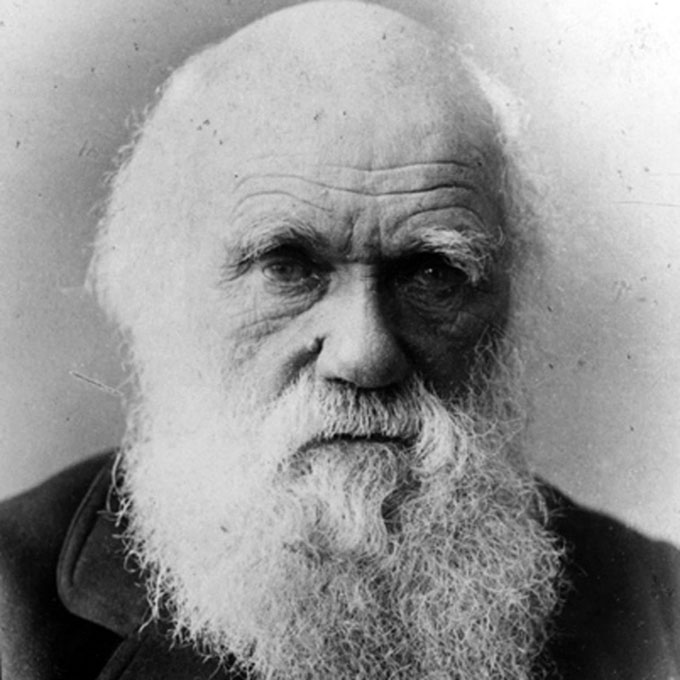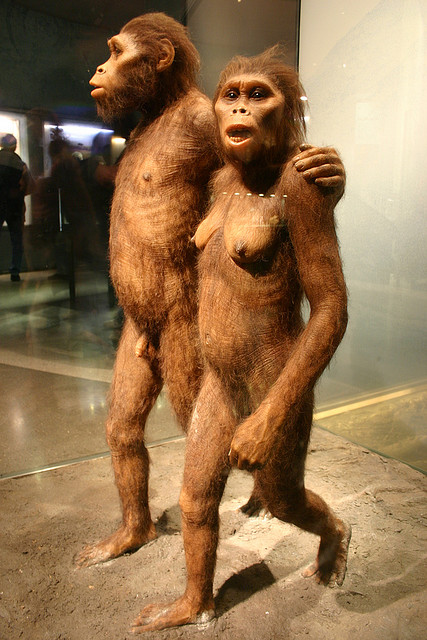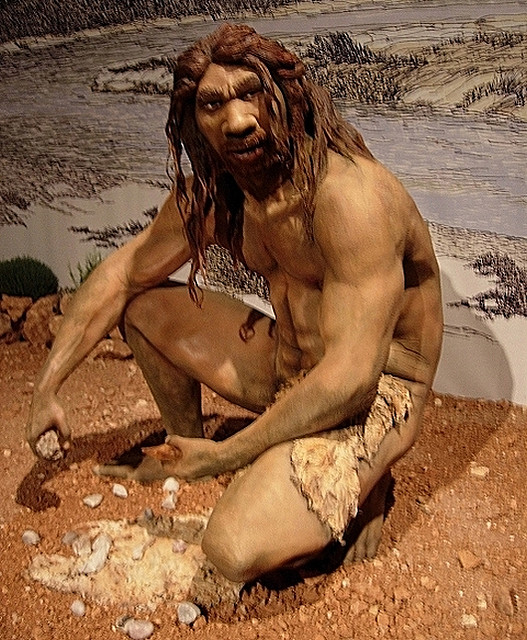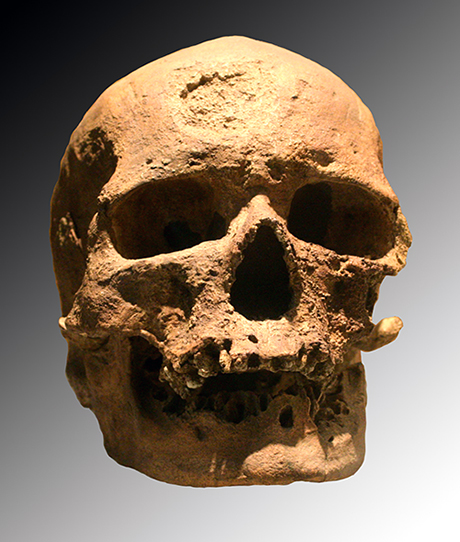When it comes to the origin and development of man, there are two opposite opinions. One opinion is scientific and other is religious. Science argues that the oldest man is not created in the form and perfection as it is today. Of course, the man is the highest creature in the nature, but this fact is more related to his mental rather than his physical feature, because among the living beings, man is neither the highest nor the strongest, nor the fastest creature. Some of his senses are substantially far behind the senses of some animals. However, still man and animals are connected with a number of common or related characteristics.
Based on morphological and anatomical characteristics humans belong to the line of the upright bipedal mammals’ so – called primates. Man is a member of hominids super-family. An anthropoid (humanlike) apes and monkeys belong to this group, and according to some scientists, half-apes as well belong to this group. From the line of two-legged mammals, half-apes are the most distant mammals from human, while when we observe today’s apes, they are much closer to human, even by blood chimpanzee, gorilla, orang-utan, and gibbon are more closer to today’s man. However, this of course does not mean that the man was created from above mentioned apes.
Humanlike apes had their ancestors even in earlier geological periods and a man had them as well. As time has passed, they became more and more different although they belonged to the common line of primates. In tertiary geological period, appeared the oldest members of the primates’ line to which belongs also »human«.
This period is divided into Eocene, Oligocene, Miocene and Pliocene.



The development way of the human was very long. A lot of time has passed until he came to the degree of development at which late-diluvial prehistoric man used to be. Eocene is characterized by the emergence of half-ape. The Miocene period is characterized by apes and late ancestors of humanlike apes, in Pliocene period can already be found the remains of humanlike monkey. The earliest predecessors of man could appear only in the late Tertiary period, or four million years ago.
Famous English scholar Charles Darwin tried to explain origin and development of the man, in his work “The Origin of Species by Means of Natural Selection” and “Origin of Man”. He has developed a theory about the origin of man from the animal through biological evolution, and therefore he set up a thesis about humanlike apes as an inevitable stage in the long process of humanization.
According to Darwin’s theory, humans by creating their own resources for survival started actively to change the world, and using its conscious character and work, humans transcended animals and raised high above them.
Religion has a different approach and explanations on the origin and development of human. Thus, in the Bible that Christians and Jews consider a major source of religion, among other things says: “God created man from the earth and let him again to return to it” or “The Lord created man from the earth’s dust and in his nostrils breathed life into him’’. Further, it is written that God created first man Adam, and then from his rib the God created first woman Eve. The substance from which man was created is known as “the earth’s dust.” Scripture does not recognize the theory of the human body evolution.
According to the Qur’an, which is the source of faith and life for Muslims, in one page it says that life came from the water, on the second page that life came from the earth, clay or stale mud or fermented water mixed with soil.
The issue of the Earth – the cradle of man cannot be considered completely solved because there are still some doubts about the exact definition of the place, or the continent where the oldest remains of a man and his culture were found. There is no doubt that Australia, America and probably northern Eurasia have to be completely ruled out as potential zones.
The rest of the Earth’s land surface (southern Eurasia and Africa) is too large to be taken into account as the cradle of the specie. That is why, with certainty it can be said that appearance of the first man is closely related to the limited space.
However, significantly large number of scientists, primarily anthropologists, considers Africa to be a continent in which the earliest humans, appeared – the earliest representative of the human species – Homo sapiens (reasonable man). Generally it is believed that the most reliable criterion for distinguishing the oldest people in relation to the animals, with whom people lived and work on daily basis, is the presence of strong will, the ability to predict and skills in making tools and weapons. All of this makes the basic requirements for the creation of culture the human race.
The evolution of primates suggests several general directions in human development. One of these directions is a change in the limbs for climbing on the trees, and later for upright walking on Earth. Other directions are reflected in the development of the skull, the increase of the brain, then on an increase of the space for the sense of sight. However, at the same time the space for the sense of smell is reduced. Then there is also a gradual movement of the eyes, originally located on the side, to the front of the skull as well as a number of other minor changes. Mutual acting of hand liberation and taking an upright position, and the development of sharp vision and an increase of mental capabilities are phenomena, which is extremely – vitally important in the evolution of primates and Homo sapiens. These characteristics are the result of the gradual transformation of analogue animal organs in human ancestors (Pithecanthropus, Africanthropus, Sinanthropus, Neanderthals and other).



An upright walking is not very safe and successful way to move around, but it is much more easily for man to do many activities when his arms and hands are free. That is why primates, in general, had very well developed hands and they were ready for hanging on the branches, and for the free movement in a diverse and often a hazardous forest environment.
Over time, man evolved through everyday work, which at the beginning was instinctive, and later on it became a conscious work by using nature’s tools and strength for sustaining of life. Man evolved from the natural to a social being. The use of objects that were found in nature as finished tools or weapons gradually instructed man to create new ones that were simpler and more perfect than tools found in nature. There is one theory (Benjamin Franklin) that says: “the man is an animal that makes tools”. Changing the nature actually adapting the nature to its ongoing needs in order to maintain and survive, man has changed himself, moving from animal to human forms of social life.
Today’s science says that the man and the great apes, African apes, had the same ancestors between 15 and 20 million years. There are evidences of that in the fossil remains of various monkey species such as Parapithecus (gr. para – near, around, very close ; pithecus – monkey) found in Egypt; Propliopithecus (gr. pro – earlier, foward) that branches into two subspecies: Pliopithecus (from the word Pliocene) and Sivapithecus (from the name of Siwalik mountain in India), and Dryopithecus (gr. drio – dense forest) or forest monkeys which lived in East Africa, northern India and Europe. From an advanced branch of Dryopithecus eventually evolved Ramapithecus, which was named after the hero of Indian mythology called Rama, and he was closer to man than to Dryopithecus.
The oldest fossil remains of an early man, the so-called Australopithecus (lat. Southern-Australis, gr. Pithecus – monkey, i.e., southern ape) were found in southern Africa, in the Transvaal. Based on the found skull and femur, which are completely similar to today’s shape of skull and femur, it can be concluded that this creature walked upright, on its hind limbs.
Another important feature relates to the capacity of the skull, because the size of the skull determined the size of the brain. It was between 900-1000 cm3. If we know that today’s most perfect monkeys have brain capacity of 400-500 cm3, man has up to 1800 cm3, and then with certainty it can be claim that Australopithecus was a transitional form between humanlike ape and modern man. Humanlike ape had some very distinctive primitive physical characteristics for example, eye bows are very bony, forehead is so low that it almost does not exist, big face, which is closer to the animal’s appearance but lower part of the face, is very well-developed, chin is pulled back, and the upper part of the face is quite protruded forward. There were at least two types of this early man Australopithecus – robustus and – Australopithecus – africanus. According to the Australopithecus teeth, he lived almost exclusively from plant foods, while africanus is smaller but he ate also animal food besides plant food. This suggests that he could have been a hunter.



The second stage in human evolution presents Pithecanthropus whose remains were found in Africa and on the Java island. Sinanthropus (lat. Sina – China) who was found in a cave south of Beijing. Atlanthropus was discovered in Algeria, in Ternifine, Rabat man found in Morocco, and the Homo Heidelbergensis who was discovered in Germany near the city of Heidelberg. Also, Neanderthal remains were earlier found in the Neanderthal Valley in Germany and later in many other areas of Europe, Africa and Asia.
Neanderthal man is a direct ancestor of today’s modern man. The extent of his brain was between 1300 and 1400 cm3. All these specimens are much more developed in relation to Australopithecus. They had smaller jaws and larger brain capacity (in an average of about 1000 cm3), and the structure of their bones, except the skull which in no way was different from the structure of today’s human. Therefore, they can be treated as completely recognizable human beings.
Apeman eventually settled on a wider geographical area. In addition to very well developed use of stone tools, he was familiar with the fire. He survived an enormous timeline period. Later on, at the end of the Pleistocene period, due to natural selection humans started to develop more and more. That is how new forms of Homo sapiens were developed. New forms of Homo sapiens significantly differentiate its physical and mental characteristics.



Even during man development, several different types of man stood out, such as Cro-Magnon. He was named after the Cro-Magnon slope in France, and there was a Grimaldi man, whose remains were found in Grimaldi cave, in Italy, on shore of the Mediterranean Sea.
Since modern man finally settled, he rapidly spread all around the world including the American and Australian soil. However, for the next 30.000 years its technology, although it was highly advanced technology, it continues to be based on the rough stone tools and weapons. His assets were based on hunting and gathering of plant products. Similarly, all the earlier man ancestors and culture of Homo sapiens belongs to the Old Stone Age, which was called Paleolithic period. In the Neolithic or New Stone Age, man – individual entered into phase of much faster development. He did that by creating finely polished tools and weapons as well as with the appearance of permanent farming.
